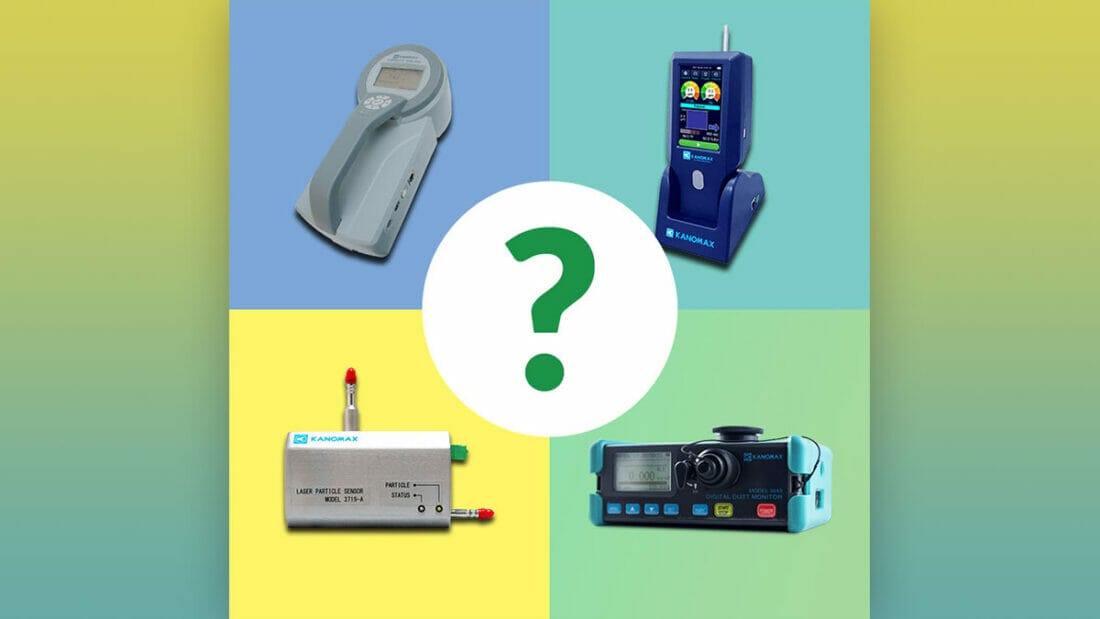Choosing the Right Particle Counter
Choosing the right particle counter for your application can be confusing with so many options on the market. This mini-guide will help you understand the factors that you should consider when making your choice.
Finding the Right Fit
Scenario #1: You’ve been tasked with finding a particle monitoring solution for a construction site. You mainly need to measure particles generated from cutting wood and similar materials. What kind of instrument do you need?
Scenario #2: You work in a cleanroom and need to measure aerosol particles. What type of counter best meets this application?
There are four main factors that will influence your choice of particle counter:
- The first consideration is the particle size(s) that must be monitored. This is partially determined by the ISO class of the testing/monitoring environment. There are ISO classes that correspond with cleanrooms, workplaces, manufacturing facilities, and more.
- Another factor is the customer’s needs. Typically a customer will chose one or two particles for the certification test (if you need help choosing which particle sizes to monitor please refer to the ISO standard). When purchasing your particle counter you will need to check the specifications to ensure the instrument can measure particles of the appropriate size(s). Make sure you choose a particle counter that can measure all the particle sizes that need to be monitored.
- The third factor is measuring location. Will the instrument be monitoring a specific area at all times? Will you need to take it with you to spot check different areas?
- The last factor that you’ll want to consider is the flow rate capability of the particle counter. In order to do that we need to consider one of the formulas from the ISO standard.
Getting Into the Math
This formula will calculate how many litres of air need to be sampled at each location in a cleanroom:
Formula: Vs = (20/Cnm) x 1000
Vs = the minimum single sample volume per location, expressed in litres
Cnm = is the class limit (number of particles per cubic metre) for the largest considered particle size specified for the relevant class.
20 = the defined number of particles that could be counted the particle concentration were at the class limit.
To learn more about how to use ISO standards to select the right particle counter for your needs please refer to the following PDF document:
World-class Particle Measuring Solutions
Once you determine what kind of particle counter you need, you’ll want the best the industry has to offer. At Kanomax USA we offer a wide range of high-precision particle measuring instruments, including:
- Handheld Particle Counters – Models 3888 and 3889
- 6-Channel Portable Particle Counters – Models 3905 and 3910
- 2-Channel Remote Particle Sensors with Analog Output – Models 3718-A and 3719-A
- 0.1 Micron Portable Particle Counter – Model 3950
- Aerosol Particle Monitor – Model AES-1000
*If you are in need of a Handheld Condensation Particle Counter (CPC), our friends at Kanomax FMT have you covered. Click here to learn more.
Also, in some cases a dust monitor might be a better fit. Dust monitors also detect particles, but they are designed for more specialized applications such as monitoring sawdust on a construction site, or oil mist in a manufacturing facility:
If you know which type of particle counter you need for your project and would like to receive a quote please fill out and submit the form located here, or if you have any technical questions about our products please contact us here.

